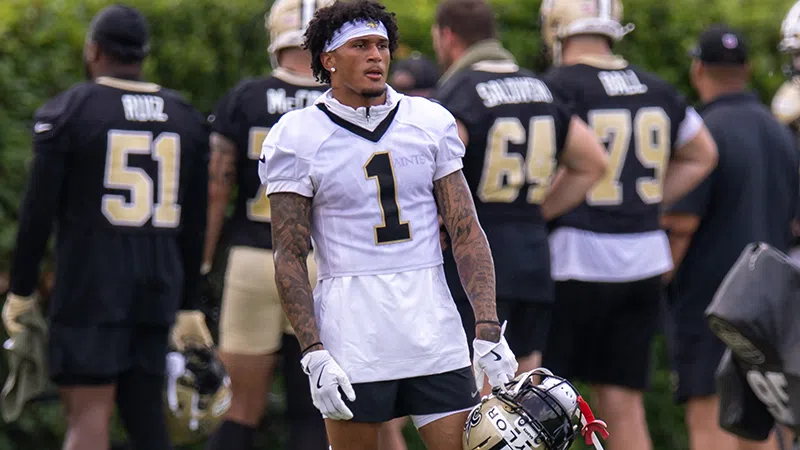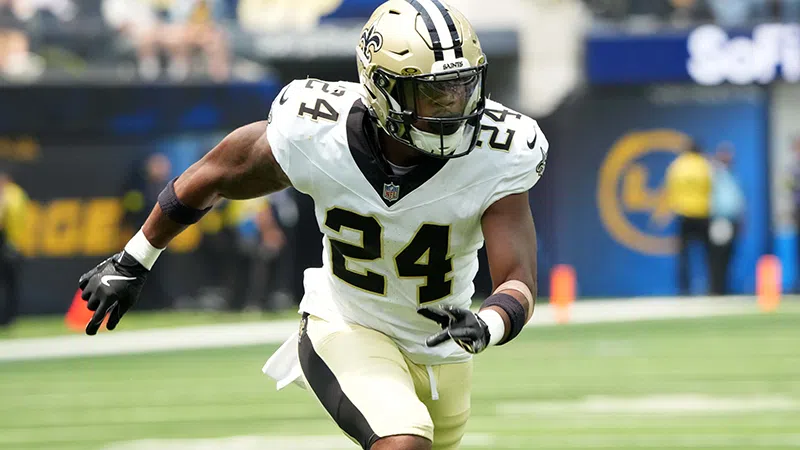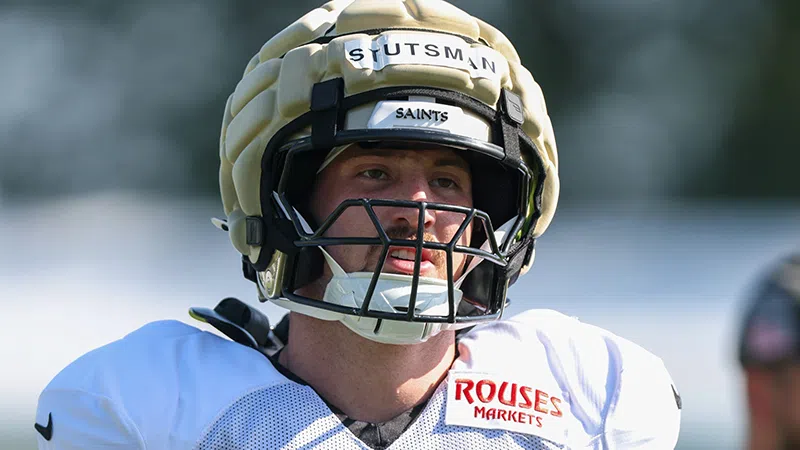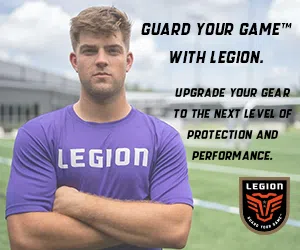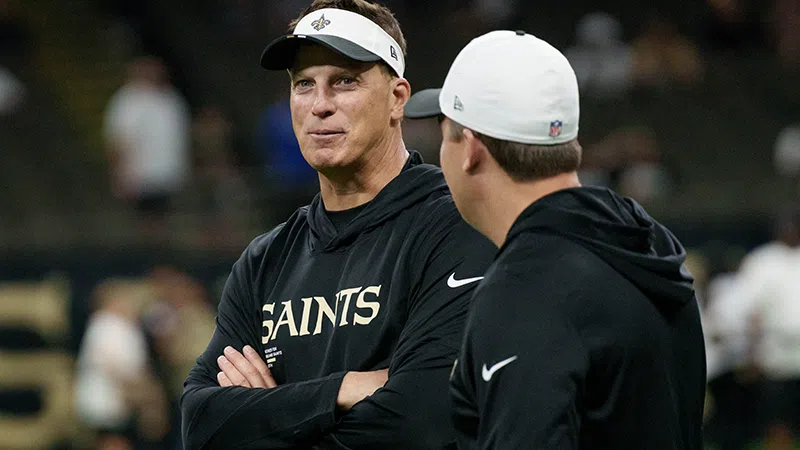
Matthew Hinton-Imagn Images
By Ross Jackson
Keys to victory can usually be simple to determine. Own the trenches, win the turnover battle, establish the run game and dictate the matchup. If a team can check all four of those boxes, it will be closer to victory. However, the truth of building a win is usually in the finer details.
On Thursday, each of the New Orleans Saints’ three coordinators were available and shed a little light on the nuances that could lead to a win against the Arizona Cardinals.
Defense: Be physical the run game
“They do a really good job with their running game both with their scheme and I think the way they use their personnel,” defensive coordinator Brandon Staley said. “I think their (offensive) line is extremely well coached. They play with a lot of tight ends and then I think the running back group runs really really tough and physical. I’ve got a ton of respect for James Conner. I think he’s one of the underrated backs in the league. He’s got a great story and he’s just a really physical player. Then when you factor in Kyler as a part of that equation, too, they’re very dangerous in that phase.”
The physical nature of the Cardinals’ run game is clearly an important part of what they do and what the Saints’ defense will be prepared for.
Last year, New Orleans surrendered 2.01 rushing yards before contact per attempt, which was the fourth-most in the NFL. On the other hand, the defense gave up just 2.95 rushing yards after contact per carry, one of the top-10 best marks of the year.
This suggests that the team had very little trouble making plays in the run game when a defender met the ball-carrier. However, getting to the ball-carrier quickly was a challenge. Physicality in the run game isn’t limited to just tackling, it’s engaging and getting off of blocks. If New Orleans can improve in its ability to win the line of scrimmage in the run game, it could lead to improved production as a whole.
Key player: DT Davon Godchaux
Offense: Communicate effectively
“The biggest challenge for us is communication,” said offensive coordinator Doug Nussmeier. ”When you play a multiple defense like this, they play many different structures. You’ve got to make sure everybody’s on the same page. So, we’ve stressed all week to our guys that it doesn’t necessarily matter if we’ve got the ideal call, because you might not always have the ideal call because these guys disguise so well. But the biggest thing is that everybody’s on the same page and we execute the calls we’re making.”
The Cardinals send a lot of different kinds of pressures. Sometimes they simply rush four off of the defensive line, at times those lineman drop out into coverage and then are replaced by a linebacker or defensive back, others they send to the house. Head coach Jonathan Gannon and defensive coordinator Nick Rallis have one of the more exotic pressure packages in the league.
In order to counteract that, communication both pre and post-snap are vital. Before the snap, Arizona will show a look and it will be important for quarterback Spencer Rattler and center Erik McCoy to diagnose that look critically as it may be a disguise. If adjustments are being made at the line based on what the defense is showing, the offense could be shifting into exactly what the Cardinals actually plan to attack. It’s an exciting chess match.
That must then be deciphered after the snap with on-the-fly reactions and adjustments in order to handle what is really being deployed by Arizona’s defense. Managing the changes in pressure will be vital for the Saints’ success on Sunday.
Key player: C Erik McCoy
Special teams: Win the hidden yardage battle by playing the matchups
“I think the biggest thing we look for is personnel,” special teams coordinator Phil Galiano said. “I think we’re very personnel oriented on our special teams. So, we’re trying to figure out:
Who are their really good cover players? And let’s make sure we’re doing a good job of getting them blocked and so we can get more return yards. Then who are their good returners? Or their good blockers. Let’s try to see if we can’t create mismatches. If one of their blockers is a
linebacker, let’s see if we can get a speed guy on him or if we get a bigger guy on him. We’re specific in what we do personnel wise.”
This is a great peek behind the curtain of special teams gameplanning. Coverage groups will often respond to the personnel of the return group much like defenses respond to offensive personnel. Doing so, allows them to dictate some of the matchups that determine field position.
Outplaying a punt return unit by getting the right coverage body types or play styles on the field could be the difference between the Cardinals’ offense starting at their own 40-yard-line and starting at their own 20-yard-line. That’s a major swing in the conversation.
Meanwhile, finding ways to counteract and outposition the coverage teams could lead to big moments for Saints returners like wide wide receiver Rashid Shaheed and running backs Velus Jones Jr. and Kendre Miller. Every head-to-head on the field could be the difference between being backed up and pouting points on the board. The Saints will want to be on the right side of that conversation on special teams throughout the season-opener.
Key player: LB Isaiah Stalbird



